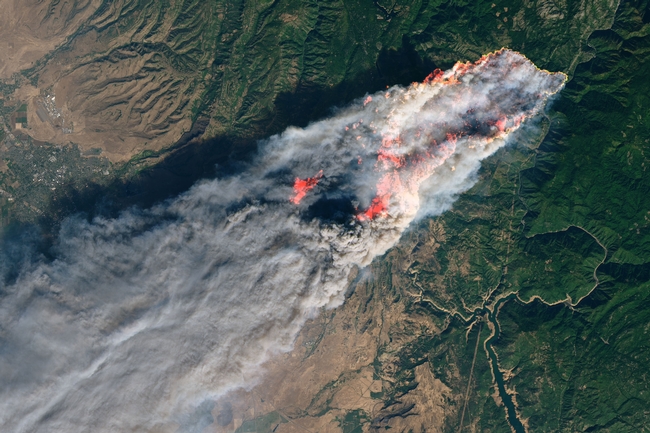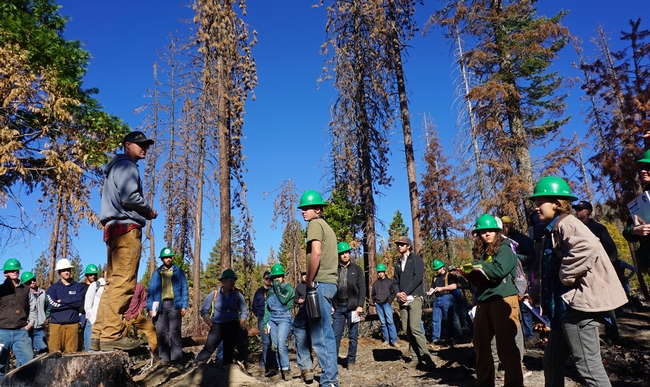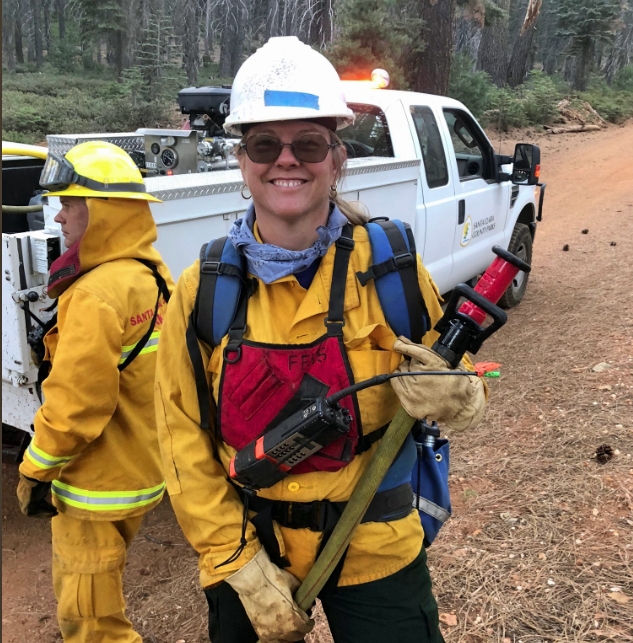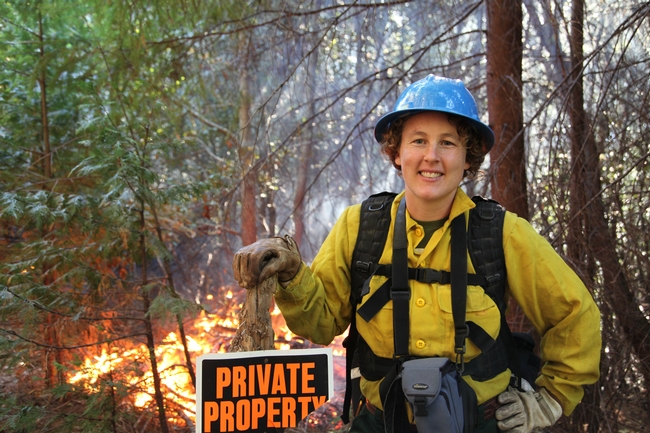Catastrophic wildfires and climate change lead to growing acceptance of ‘pyrosilviculture’
For millennia, fires periodically burned through California forests, thinning trees, reducing shrubbery and clearing out downed branches and debris. Without periodic fire, the forests became more dense, with spaces between large trees filling in with a thick carpet of duff, seedlings and shrubs.
As a result, today's forests are prone to more intense and damaging fires, like the Rim Fire, King Fire, and — most recently — the Camp Fire in Butte County. These fires are burning with unprecedented severity and speed, threatening large swaths of forest, towns, and even urban areas.
Using fire as part of forest management is not a new concept. Native Americans were known to burn brush to open up hunting grounds and clear shrubbery for gathering. Decades ago, iconic Berkeley forestry professor Harold Biswell said, “Fire in the Sierra Nevada is as important as rain.”
Competing forces, however, pushed foresters and fire officials toward fire prevention and suppression, particularly the cataclysmic fires of the early 20th century that leveled entire towns and left dozens of residents and firefighters dead. The fear of out-of-control blazes and the perceived damage to timber resources launched a war on fire that has lasted a hundred years. Some forest managers are urgently trying to negotiate a truce.
Making peace with fire and turning it into a useful tool, rather than a raging threat, was the objective of an October meeting in Shaver Lake of UC Cooperative Extension forestry and natural resources scientists, Southern California Edison forest managers, CALFIRE officials and U.S. Forest Service representatives.
The event also raised awareness of “pyrosilviculture,” a new forest management term coined by UC fire scientist Rob York to emphasize the importance of fire in silviculture, the management of forests for wood.
Forests have myriad benefits – recreational, environmental and economic. Nature lovers value the whisper of pine trees in the wind and green shade over hiking trails and ski slopes. Owls, bears, deer and other wildlife make their homes among firs, pines, oaks and cedars. Forests stabilize mountain slopes, which store water as snow for agriculture and drinking. People build their homes, businesses and schools out of the planks and boards cut from the straight, soft wood of conifer trees.
The value of California forest products was about $429 million in 2017, according to the USDA. Because fires can damage and destroy trees, the timber industry has historically been reluctant to use fire as a tool. That's changing.
“Fire is such an important ecological process, you can't manage for timber without fire,” York said.
York is the manager of the Blodgett Forest Research Station, UC Berkeley's 4,000-acre mixed conifer and oak forest near Georgetown where researchers study forest management practices for increasing timber yield while taking advantage of fire to enhance forest health and make forest stands more resilient to wildfire.
Controlled burning can be used to treat fuels and reverse these trends, but it has been inhibited by a number of barriers, including landowners' concerns about liability, risk aversion among fire management agencies, narrow burn windows, air quality limitations and other regulatory challenges. Now, public demand for prescribed fires is growing.
“I believe what moved the needle was, for several years in a row, there were high-severity fires in the news,” York said. “Wildfires were in the public zeitgeist. People began asking, ‘Why aren't we doing more prescribed fire?'”
Climate change is also intensifying the interest among the public and silviculture professionals. Because California is getting warmer and fire seasons are growing longer, high-severity fires are expected to increase.
“There would logically be a tipping point. Even though we reduce the growth of trees when we use fire, if it can prevent the loss of the forest entirely, it would be meeting the timber objective,” York said.
The vast tree die-off during the 2011-2016 drought was another jarring sign that the Sierra Nevada ecosystem is out of balance.
The U.S. Forest Service, which manages 20 million acres of forest in California, is using prescribed fire to reduce fire risk on federal forestlands, but scientists say it's not nearly enough to reduce the threat of catastrophic wildfire. CAL FIRE is ramping up its controlled burn efforts, but it will take time to address far-reaching areas of overgrown forestlands. The agency sometimes uses mechanical measures such as mastication and chaining before burning to pre-treat fuels and prepare units for burning.
“We need to work around communities first, and then move out to the wider landscape,” said CAL FIRE division chief Jim McDougald. “If a prescribed fire moves into a subdivision and burns houses, we take 100 steps back.”
“Burning is a key element of forestland management and it can be safe if done properly,” Kocher said. “We provide classroom instruction and invite participants to join a live prescribed fire at Blodgett Forest as part of their training so they become familiar with the process.”
At the training sessions, UC Cooperative Extension advisor Lenya Quinn-Davidson said that in some cases, private landowners can conduct burns themselves. In her hometown in Trinity County, many ranchers and landowners conduct small broadcast burns to reduce fuels and improve forage. These burns are typically quite small and usually conducted in the winter.
“This can be a good option for landowners who wish to burn small areas, but we need other options for bigger, more complex burns” Quinn-Davidson said.
In other parts of the country, landowners have formed Prescribed Burn Associations (PBAs) that allow landowners to work with neighbors and other community members on controlled burns, sharing equipment and labor while developing skills. The PBA model provides a low-cost, grassroots option for prescribed burning, and empowers landowners to work together, and with other key experts and partners, to bring fire back to the landscape, says Quinn-Davidson.
“People are desperate to do something about fire, and the PBA model gives them an option to actively engage with each other and with fire as a tool—it's very empowering,” said Quinn-Davidson.
Comments:
As a property owner in Georgetown I am very concerned of a catastrophic fire destroying our community. I would be interested in attending a burn at Blodgett.
If you send me an email at sdkocher@ucanr.edu I'll make sure to put you on the announcement list for the next set of Rx workshops.
Thanks also for your comment Kathleeen. Yes, we do cover the effects of treatments and how the outcomes look when treated with fire or mechanical means or both. I totally agree that we need a lot of action at the community wide scale.
is so encouraging to know that serious plans are being initiated at last.
When I was a child and the elderly neighbor refused to evacuate.my mom and my three siblings stayed with until "Charlie comes home from the mill." The fire turned at the last hour, Being the only family to not evacuate was a dubious honor.





Samantha
Posted by Samantha Hinrichs on November 16, 2018 at 8:37 AM